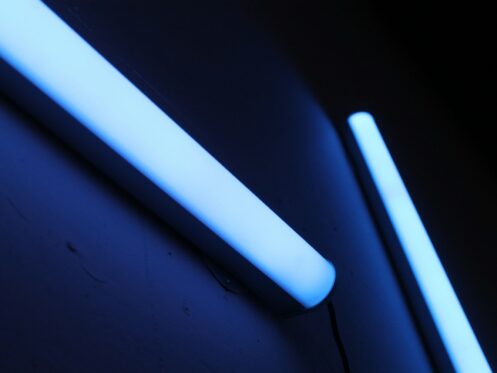A comfortable and healthy home environment is crucial for the well-being of homeowners in San Diego. While traditional HVAC services focus on controlling temperature and humidity levels, the importance of indoor air quality should not be overlooked. Poor indoor air quality, resulting from pollutants, allergens, or pathogens, can negatively impact your health and comfort. One effective way to enhance your home’s indoor air quality is by utilizing HVAC UV lights, which can significantly reduce airborne contaminants and create a healthier living environment.
In this post, Friar’s Plumbing, Heating, and Air will explore the benefits of HVAC UV lights, their effectiveness in eliminating harmful pollutants and pathogens, and how they can contribute to a cleaner, healthier home. We’ll also provide insight into the installation process and the importance of professional guidance in selecting and maintaining the right UV light system for your HVAC unit. By understanding the advantages of HVAC UV lights, you can make informed decisions about enhancing your home’s indoor air quality and safeguarding the health and well-being of your family.
Ultraviolet (UV) light technology has long been recognized for its disinfection properties, particularly in medical facilities and water treatment plants. In recent years, this technology has found its way into residential HVAC systems to improve indoor air quality, as it effectively kills or neutralizes harmful airborne contaminants, such as mold, bacteria, and viruses. By integrating UV lights into your HVAC system, you can greatly reduce the presence of these pollutants, leading to cleaner, healthier air in your home.
1. Benefits of HVAC UV Lights: Cleaner, Healthier Air
The primary benefit of incorporating UV lights into your HVAC system is improved indoor air quality. UV lights effectively inactivate or destroy various airborne pathogens and contaminants like bacteria, mold, and viruses by targeting their DNA, rendering them unable to reproduce and cause harm to your health. As a result, the air you breathe in your home becomes cleaner and healthier, reducing the risk of respiratory issues, allergies, and illnesses caused by poor indoor air quality.
In addition to reducing airborne pathogens, HVAC UV lights can also help control mold growth on the evaporator coils, blower fan, and otHVAC system components stem. By keeping these surfaces clean and mold-free, your HVAC system will run more efficiently and maintain proper airflow, contributing to better indoor air quality.
2. Effective and Low Maintenance Solution
One of the great advantages of HVAC UV lights is their efficacy in providing a healthier home environment. When properly installed, these lights can eliminate harmful airborne microorganisms, providing you with a significant improvement in indoor air quality. Moreover, UV light technology is a low-maintenance solution, as the UV bulbs used in HVAC systems typically have a long lifespan and require only occasional replacement, usually every 1-2 years.
However, it’s crucial to understand that while HVAC UV lights can effectively trap and neutralize various pollutants and pathogens, they might not completely eliminate all types of indoor air contaminants. For this reason, it’s essential to consider other complementary indoor air quality solutions, such as air purifiers, proper ventilation, and regular HVAC maintenance to ensure optimal indoor air quality in your home.
3. Professional Installation and Compatibility
To ensure the effectiveness and efficiency of HVAC UV lights, it’s essential to seek professional guidance on selecting the right type of UV light system for your home and HVAC unit. Factors to consider include the system’s compatibility with your HVAC unit, the intended installation location, and the desired level of air purification.
An experienced HVAC technician can help you determine the most suitable UV light system for your needs, based on factors such as bulb types, installation methods, and system features. Proper installation is crucial to ensure maximum performance and efficiency. Skilled technicians can recommend the best placement of the UV lights within your HVAC system to optimize air sterilization, accounting for factors such as air circulation patterns and potential germicidal effectiveness.
4. HVAC UV Lights: A Sustainable and Energy-Efficient Solution
Another advantage of using HVAC UV lights is their energy efficiency and sustainability. As these lights require minimal power to operate, they consume significantly less energy compared to traditional air purifiers, making them an environmentally friendly and cost-effective option for improving indoor air quality. Moreover, the UV lights’ effectiveness in preventing mold growth on HVAC components can enhance the energy efficiency of your entire HVAC system by maintaining proper airflow and reducing the need for extensive cleaning or mold remediation.
Conclusion
HVAC UV lights offer exceptional benefits for homeowners seeking cleaner, healthier air in their San Diego homes. UV lights can improve indoor air quality and create a more comfortable living environment by effectively targeting and neutralizing airborne pathogens and pollutants such as mold, bacteria, and viruses. Combined with other indoor air quality solutions and proper HVAC maintenance, HVAC UV lights are an integral part of a comprehensive and sustainable approach to ensuring a healthy and comfortable home.
If you’re interested in improving your home’s indoor air quality with the help of HVAC UV lights, trust our team of experienced technicians at Friar’s Plumbing Heating & Air to provide you with professional guidance, installation, and maintenance services. We will work with you to select the right UV light system for your home and ensure its optimal performance in providing cleaner, healthier air for you and your family. Schedule a consultation with us today to discover how HVAC UV lights can enhance your home’s indoor air quality and overall comfort.

